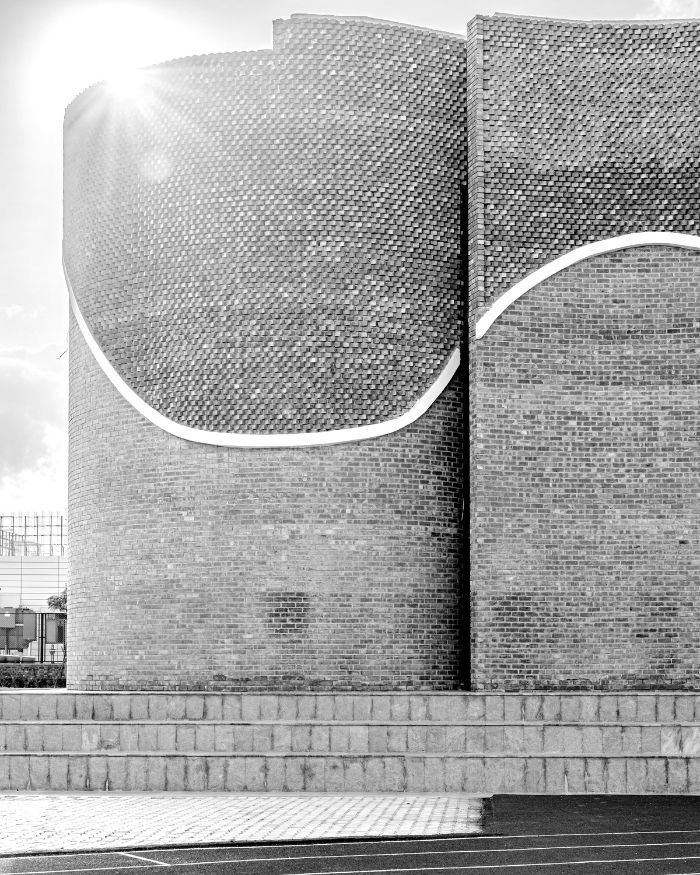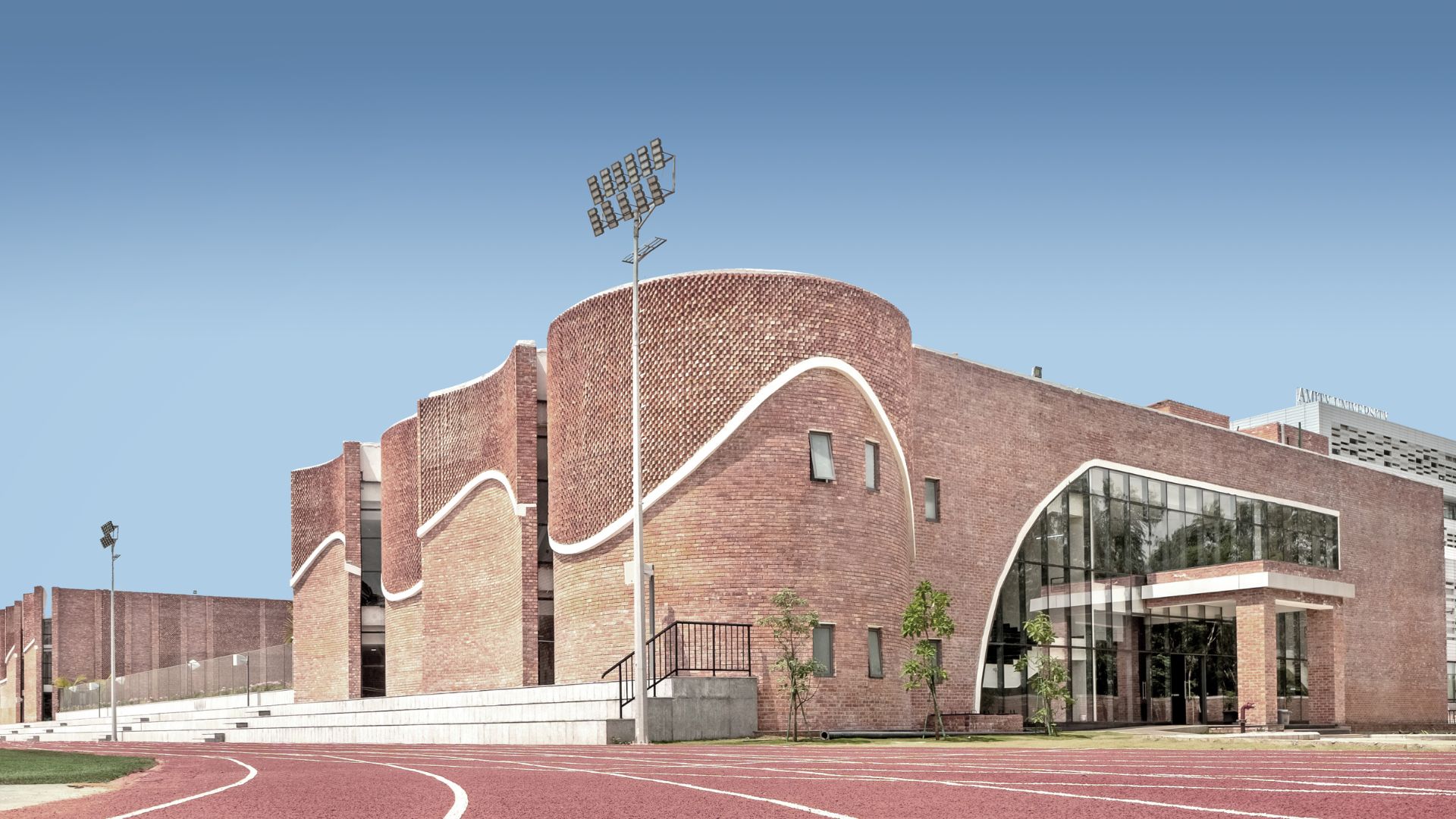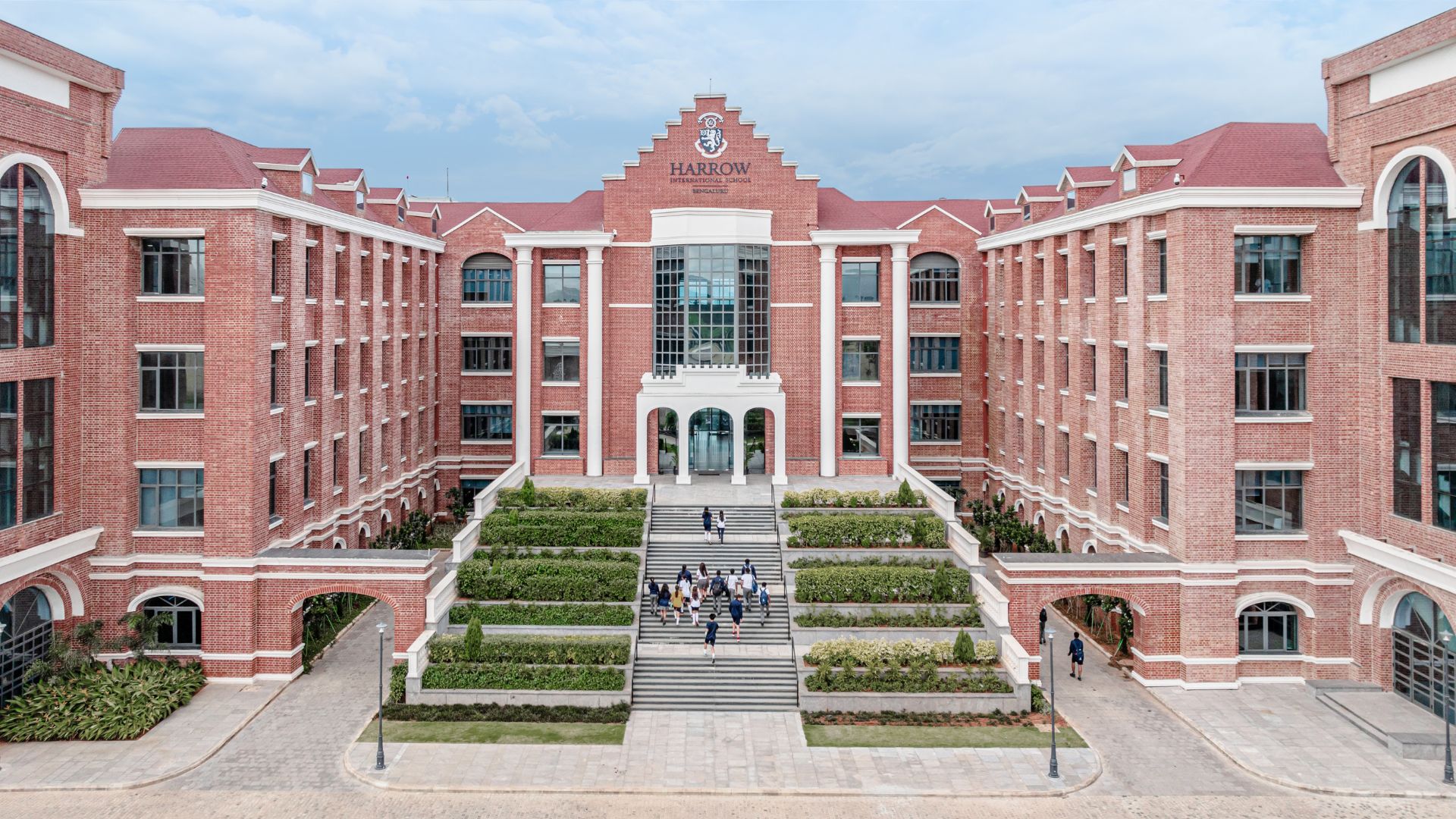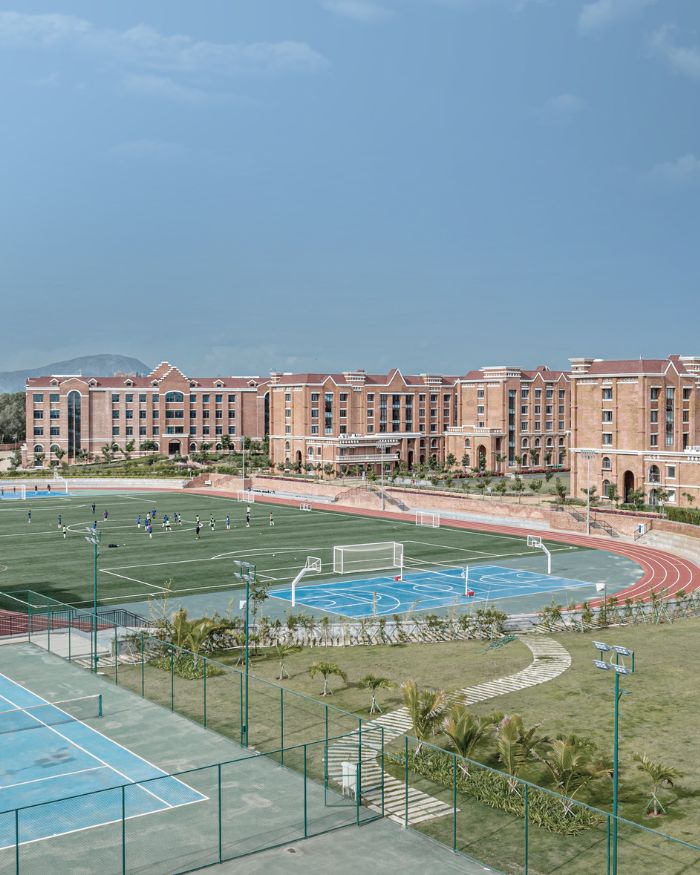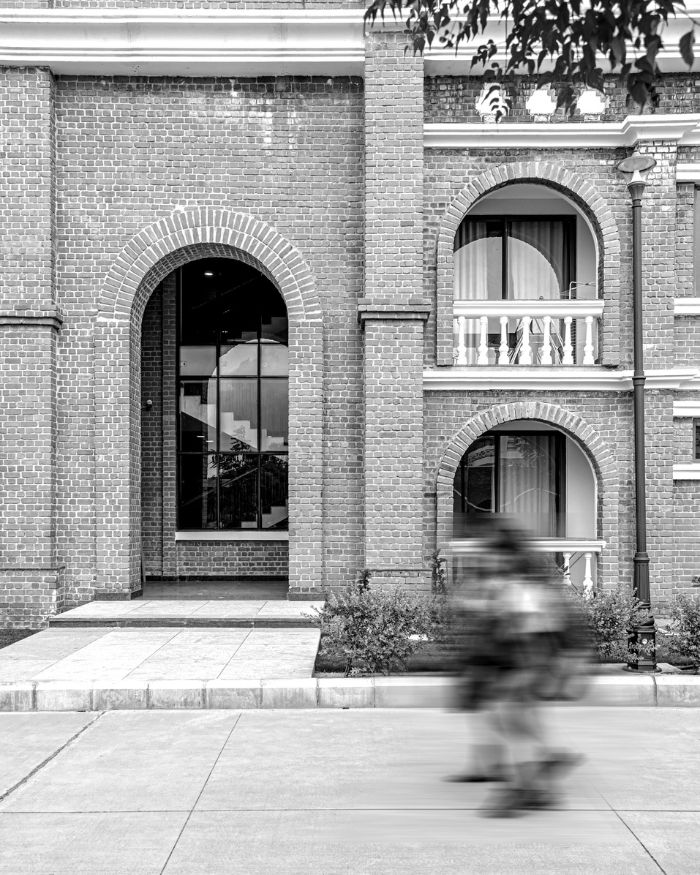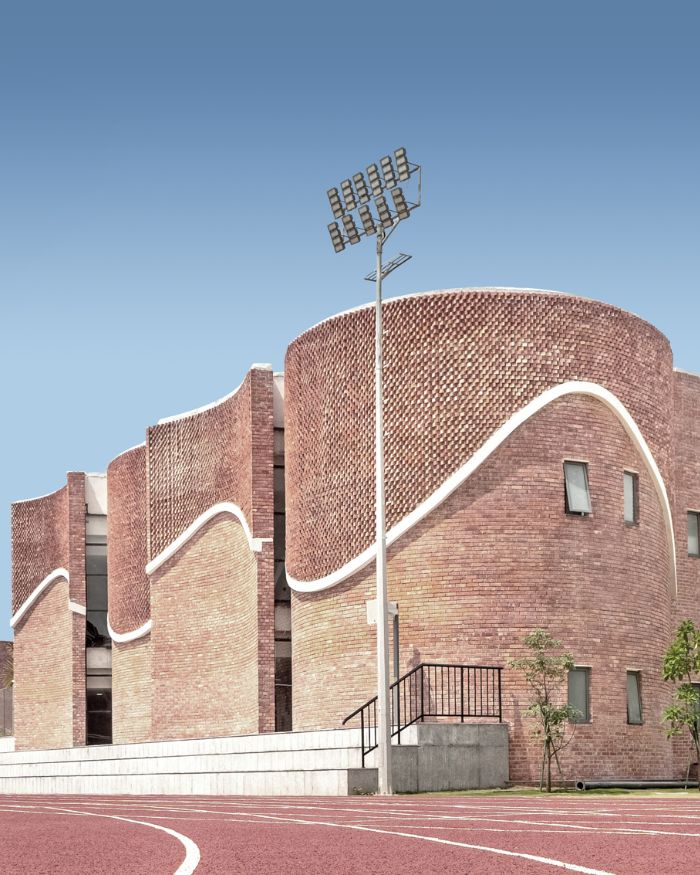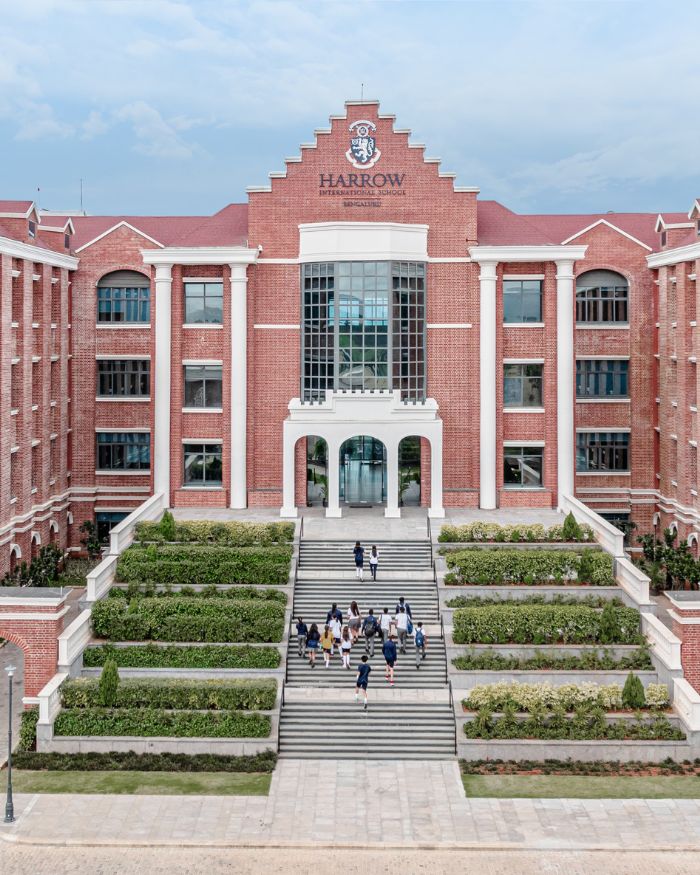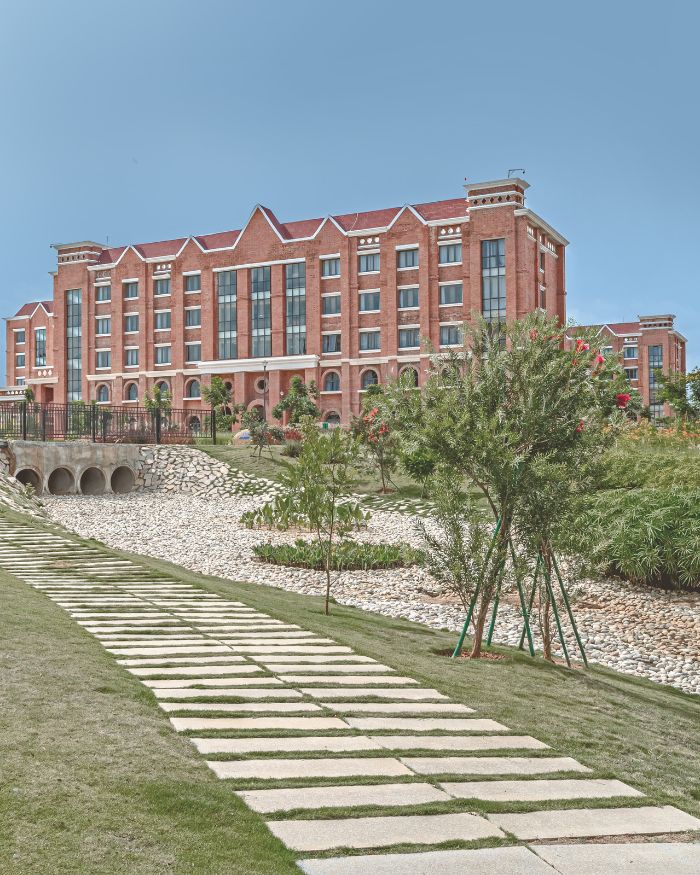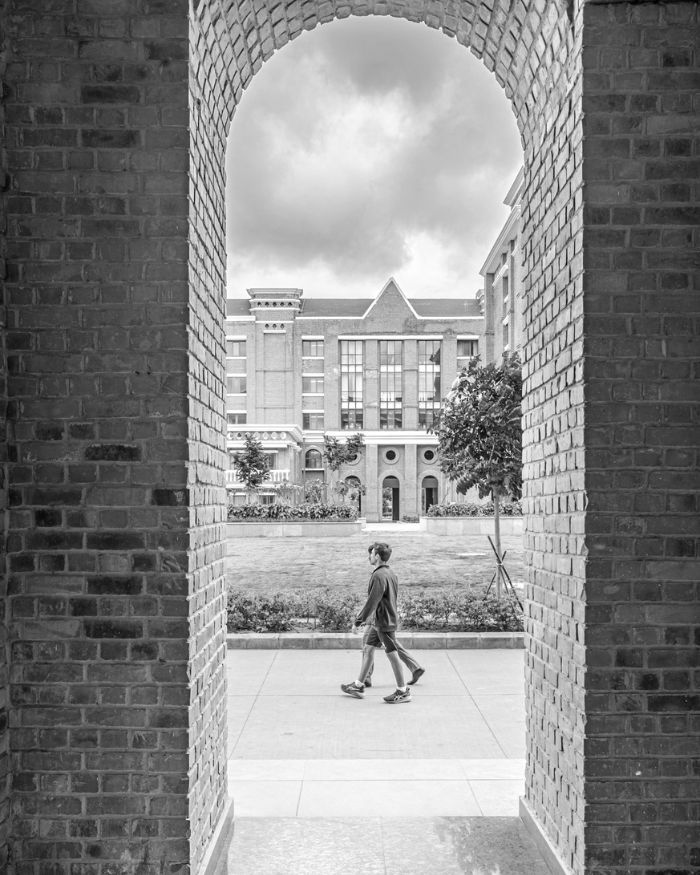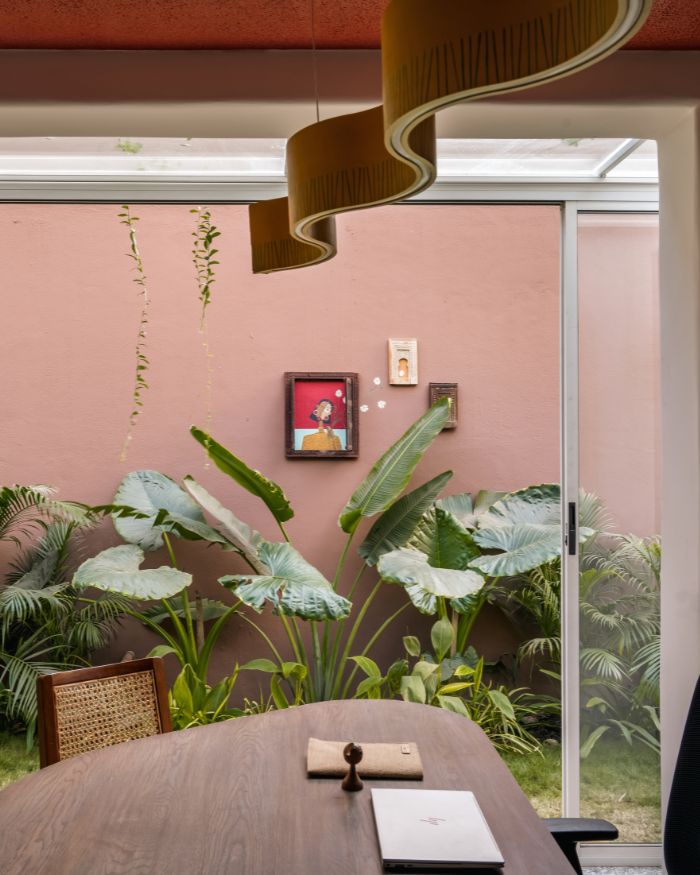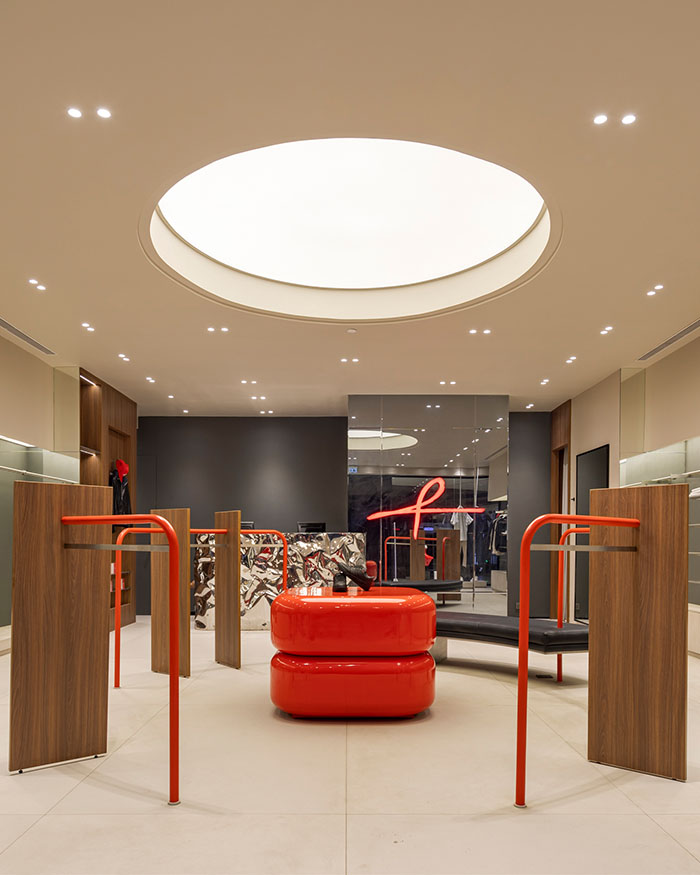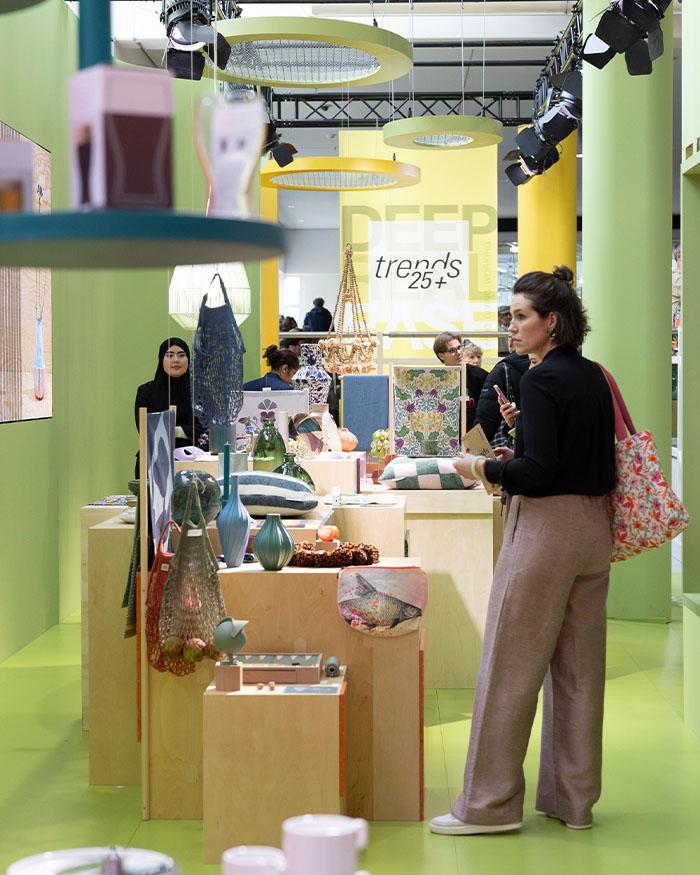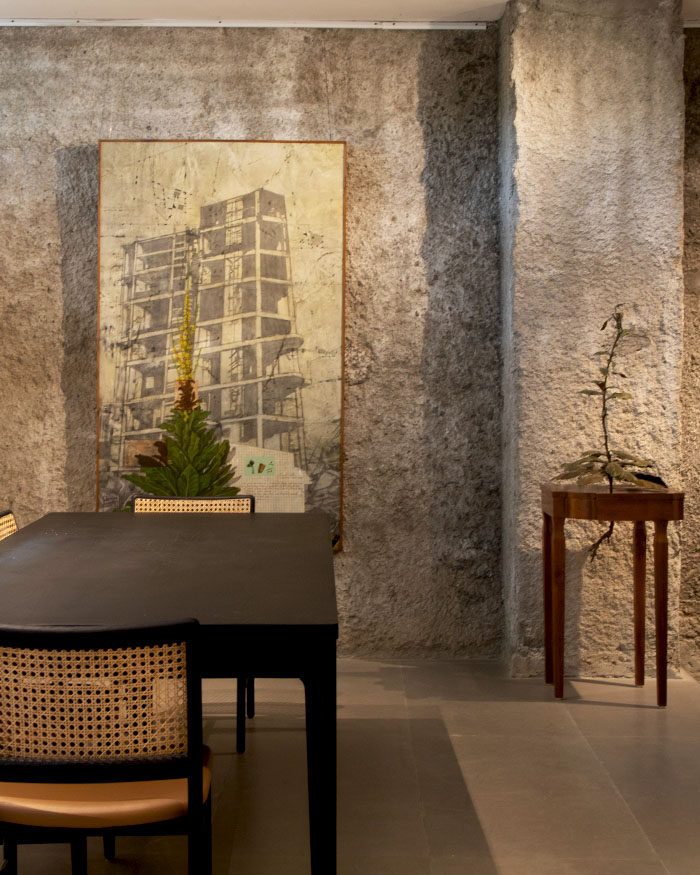Mindful of the environment and students
The landscape isn’t just mindful of eco-friendly practices but also of student wellbeing. The stream that meanders through the campus is more than aesthetics. Finding its way through the natural contours, it is a calming soundscape to a mindful zone. By employing the use of bioswales, which are vegetated channels for rainwater management, ecological functionality produces a visual softness to the space.
Ecological interventions
At the entrance, visitors are greeted gracefully in a formal landscape shaped by a tree-lined boulevard. Even the residential parts of the campus have tree-covered walkways, easing movement, yet making students and guests feel one with nature. The orientation of the spaces on the campus take advantage of natural cycles. The academic, residential and sports blocks have a north-south orientation that maximises daylight and allows for ventilation. The use of chajjas and jalis in the architecture let breeze come in, while HVAC systems and rooftop solar panels result in a low energy demand. A 30-meter clocktower reduces the overall carbon footprint while also acting as a central anchor. The rootedness of the space, whether it’s an environment or a conscious mindset, reminds students that education often transcends boundaries of a classroom.
Read More: Humayun’s Tomb Site Museum by Vir.Mueller Architects revels in absence
